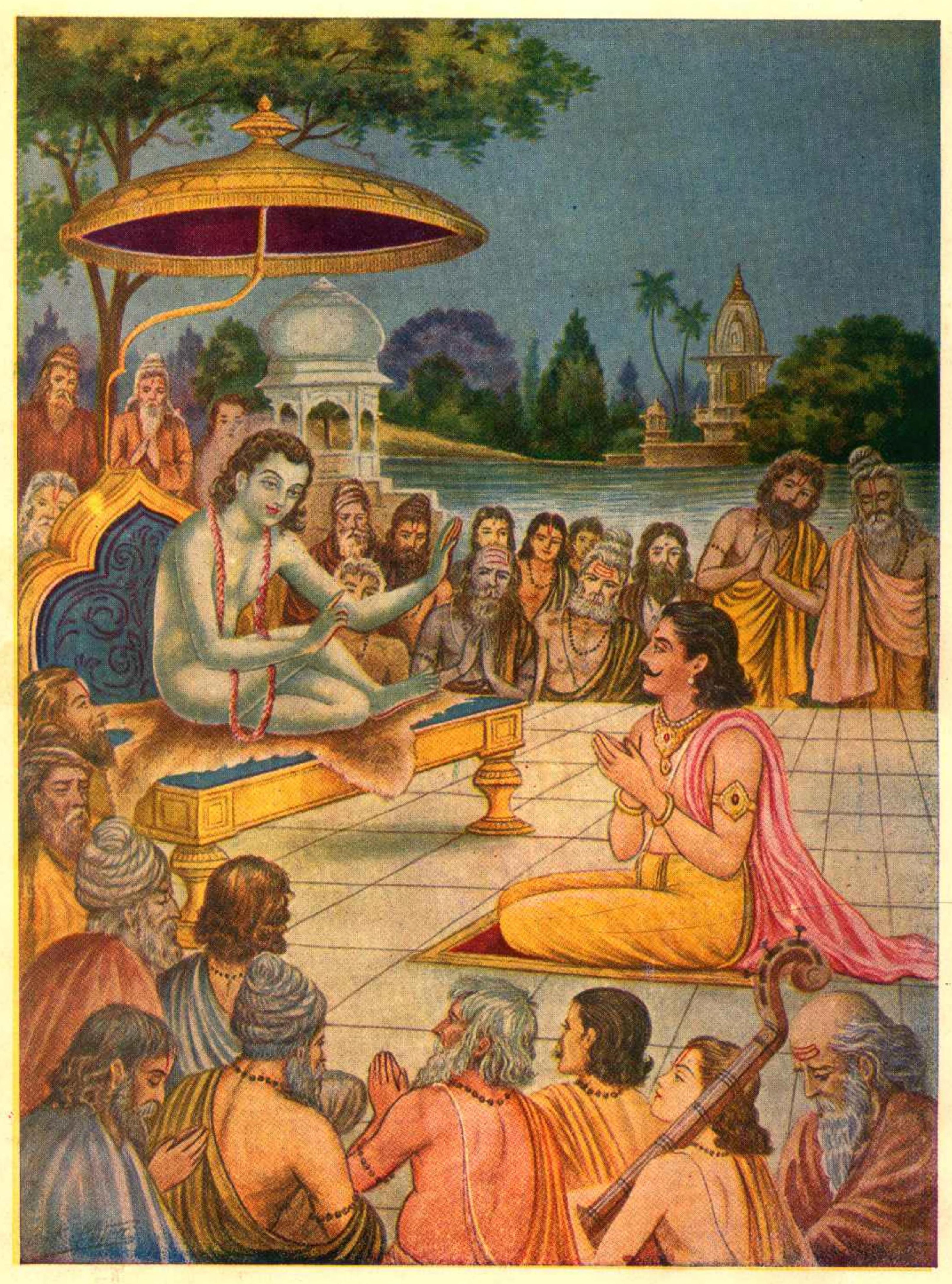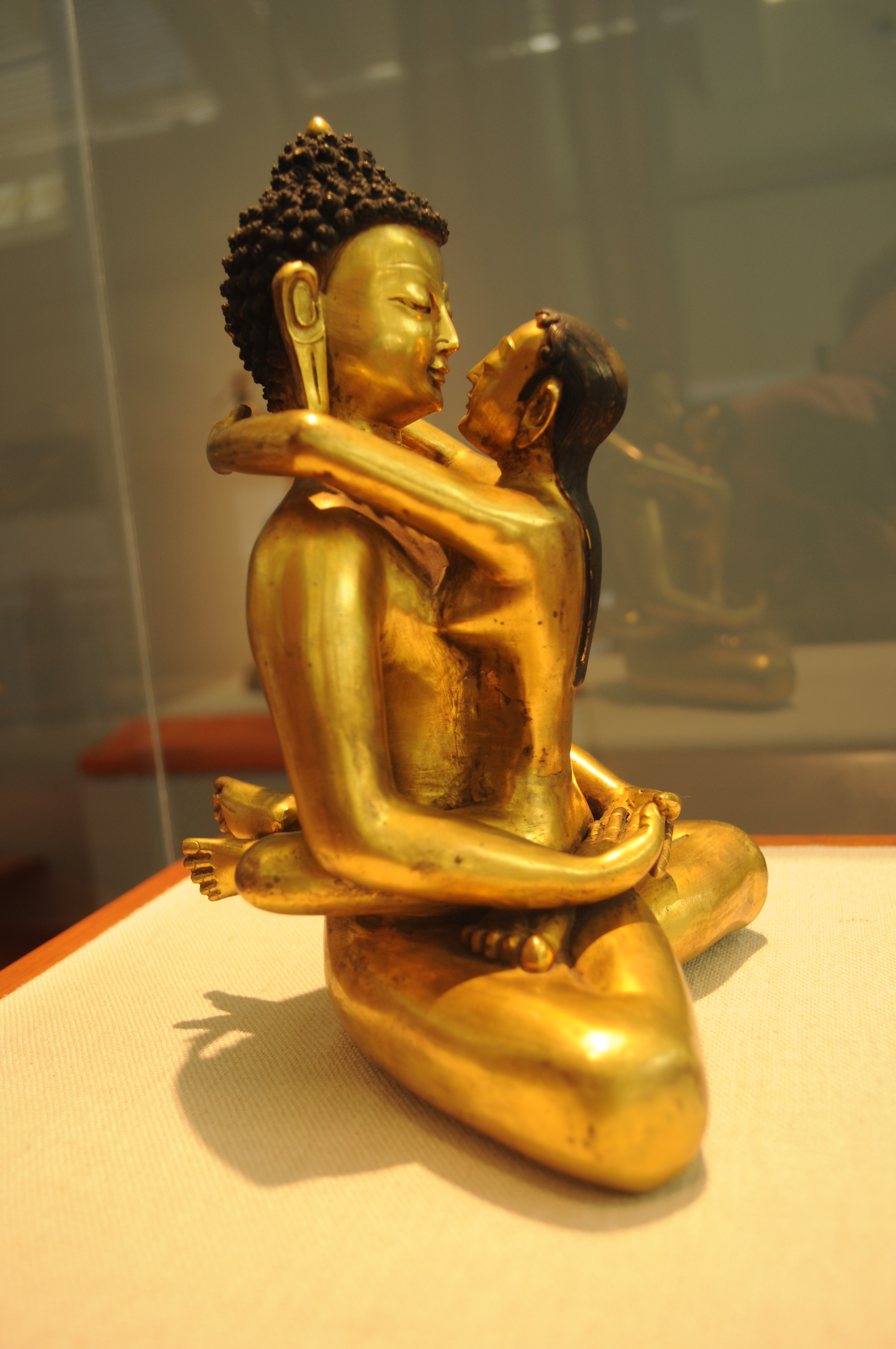|
Vāsanā
Vāsanā (Sanskrit; Devanagari: वासना) is a behavioural tendency or karmic imprint which influences the present behaviour of a person. It is a technical term in Indian philosophy, particularly Yoga, as well as Buddhist philosophy and Advaita Vedanta. Nomenclature, orthography and etymology ''Vāsanā'' (Devanagari: वासना, ) and its near homonym ''vasana'' (Devanagari: वसन) are from the same Indo-European linguistic root, sharing a common theme of 'dwelling' or 'abiding'. * ''Vāsanā'' (Devanagari: वासना): ** Past impressions, impressions formed, the present consciousness of past (life) perceptions; ** The impression of anything in the mind, the present consciousness formed from past perceptions, knowledge derived from memory, the impressions remaining in the mind; ** Thinking of, longing for, expectation, desire, inclination. * ''Vasana'' (Devanagari: वसन): cloth, clothes, dress, garment, apparel, attire, dwelling or abiding. Buddhism ... [...More Info...] [...Related Items...] OR: [Wikipedia] [Google] [Baidu] |
Śrīmad Bhāgavatam
The ''Bhagavata Purana'' (; ), also known as the ''Srimad Bhagavatam (Śrīmad Bhāgavatam)'', ''Srimad Bhagavata Mahapurana'' () or simply ''Bhagavata (Bhāgavata)'', is one of Hinduism's eighteen major Puranas (''Mahapuranas'') and one of the most popular in Vaishnavism. Composed in Sanskrit and traditionally attributed to Veda Vyasa, it promotes ''bhakti'' (devotion) towards Krishna, an avatar of Vishnu, integrating themes from the Advaita (monism) philosophy of Adi Shankara, the Vishishtadvaita (qualified monism) of Ramanujacharya and the Dvaita (dualism) of Madhvacharya. It is widely available in almost all Languages of South Asia, Indian languages. The ''Bhagavata Purana'', like other puranas, discusses a wide range of topics including cosmology, astronomy, genealogy, geography, legend, music, dance, yoga and culture. As it begins, the forces of evil have won a war between the benevolent ''Deva (Hinduism), devas'' (deities) and evil ''asuras'' (demons) and now rule th ... [...More Info...] [...Related Items...] OR: [Wikipedia] [Google] [Baidu] |
Indian Philosophy
Indian philosophy consists of philosophical traditions of the Indian subcontinent. The philosophies are often called darśana meaning, "to see" or "looking at." Ānvīkṣikī means “critical inquiry” or “investigation." Unlike darśana, ānvīkṣikī was used to refer to Indian philosophies by classical Indian philosophers, such as Chanakya in the Arthashastra, Arthaśāstra. A traditional Hindu classification divides āstika and nāstika schools of philosophy, depending on one of three alternate criteria: whether it believes the Vedas as a valid source of knowledge; whether the school believes in the premises of Brahman and Atman (Hinduism), Atman; and whether the school believes in afterlife and Deva (Hinduism), Devas. (though there are exceptions to the latter two: Mimamsa and Samkhya respectively). There are six major (āstika) schools of Hindu philosophy, Vedic philosophy—Nyaya, Vaisheshika, Samkhya, Yoga (philosophy), Yoga, Mīmāṃsā and Vedanta—and five ... [...More Info...] [...Related Items...] OR: [Wikipedia] [Google] [Baidu] |
Ground (Dzogchen)
In Dzogchen, the ground or base () is the primordial state of any sentient being. It is an essential component of the Dzogchen tradition for both the Bon tradition and the Nyingma school of Tibetan Buddhism. Knowledge of this ''ground'' is called ''rigpa''. Explication A key concept in Dzogchen is the 'basis', 'ground' or 'primordial state' (Tibetan: གཞི་ ''gzhi''), also called the general ground (སྤྱི་གཞི་ ''spyi gzhi'') or the original ground (གདོད་མའི་གཞི་ ''gdod ma'i gzhi''). The basis is the original state "before realization produced buddhas and nonrealization produced sentient beings". It is atemporal and unchanging and yet it is "noetically potent", giving rise to mind (སེམས་ ''sems,''), consciousness (ཤེས་པ་ ''shes pa''), delusion (མ་རིག་པ་ ''marigpa'') and knowledge (རིག་པ་་''rigpa''). Furthermore, Hatchell notes that the Dzogchen tradition portrays ultimate reality as ... [...More Info...] [...Related Items...] OR: [Wikipedia] [Google] [Baidu] |
Habits
A habit (or wont, as a humorous and formal term) is a routine of behavior that is repeated regularly and tends to occur subconsciously. A 1903 paper in the ''American Journal of Psychology'' defined a "habit, from the standpoint of psychology, [as] a more or less fixed way of thinking, willing, or feeling acquired through previous repetition of a mental experience." Habitual behavior often goes unnoticed by persons exhibiting it, because a person does not need to engage in self-analysis when undertaking routine tasks. Habits are sometimes Compulsive behavior, compulsory. A 2002 daily experience study by habit researcher Wendy Wood (social psychologist), Wendy Wood and her colleagues found that approximately 43% of daily behaviors are performed out of habit. New behaviours can become automatic through the process of habit formation. Old habits are hard to break and new habits are hard to form because the behavioural patterns that humans repeat become imprinted in neural pathways, ... [...More Info...] [...Related Items...] OR: [Wikipedia] [Google] [Baidu] |
Indriya
''Indriya'' (literally "belonging to or agreeable to Indra") is the Sanskrit and Pali term for physical strength or ability in general, and for and specifically refers to the ''five spiritual faculties'', the five or six sensory faculties, and the twenty-two phenomenological faculties. Etymology ''Indriya'', literally "belonging to or agreeable to Indra," chief deity in the Rig Veda and lord of the Trāyastriṃśa heaven (also known as Śakra or Sakka in Buddhism), hence connoting supremacy, dominance and control, attested in the general meaning of "power, strength" from the ''Rig Veda''. In Buddhist Sanskrit and Pali the term generally refers to physical strength or ability in general, and more specifically to the five spiritual faculties, the five or six sensory faculties, or the twenty-two phenomenological faculties. Five spiritual faculties In the Pali Canon's Sutta Pitaka, the "five spiritual faculties" (Pali: '), which contribute to an awake state of mind, are: * faith ... [...More Info...] [...Related Items...] OR: [Wikipedia] [Google] [Baidu] |
Mahābhūta
''Mahābhūta'' is Sanskrit for "great element". However, very few scholars define the five mahābhūtas in a broader sense as the five fundamental aspects of physical reality. Hinduism In Hinduism's sacred literature, the "great" elements (''mahābhūta'') are fivefold: aether, air, fire, water and earth. See also the Samkhya Karika of Ishvara Krishna, verse 22. For instance, the describes the five "sheaths" of a person (Sanskrit: '' puruṣa''), starting with the grossest level of the five evolving great elements: :From this very self did aether come into being; from aether, air; from air, fire; from fire, water, from water, the earth; from the earth, organisms; from organisms, foods; and from foods, people. Different from and lying within this people formed from the essence of foods is the self consisting of lifebreath. Different from and lying within this self consisting of breath is the self consisting of mind. Different from and lying within this self consisting of ... [...More Info...] [...Related Items...] OR: [Wikipedia] [Google] [Baidu] |
Ātman (Hinduism)
''Ātman'' (; ) is a Sanskrit word for the true or eternal Self or the self-existent essence or an impersonal (''it'') witness-consciousness within each individual. Atman is conceptually different from Jīvātman, which persists across multiple bodies and lifetimes. Some schools of Indian philosophy regard the ''Ātman'' as distinct from the material or mortal ego ('' Ahankara''), the emotional aspect of the mind ('' Citta''), and existence in an embodied form ('' Prakṛti''). The term is often translated as soul, but is better translated as "Self", as it solely refers to pure consciousness or witness-consciousness, beyond identification with phenomena. In order to attain moksha (liberation), a human being must acquire self-knowledge ('' Atma Gyaan or Brahmajnana''). ''Ātman'' is a central concept in the various schools of Indian philosophy, which have different views on the relation between ''Atman'', individual Self ('' Jīvātman''), supreme Self ('' Paramātmā'') a ... [...More Info...] [...Related Items...] OR: [Wikipedia] [Google] [Baidu] |
Vaishnava
Vaishnavism () ), also called Vishnuism, is one of the major Hindu traditions, that considers Vishnu as the sole supreme being leading all other Hindu deities, that is, '' Mahavishnu''. It is one of the major Hindu denominations along with Shaivism, Shaktism, and Smartism. Its followers are called Vaishnavites or ''Vaishnava''s (), and it includes sub-sects like Krishnaism and Ramaism, which consider Krishna and Rama as the supreme beings respectively. According to a 2020 estimate by The World Religion Database (WRD), hosted at Boston University’s Institute on Culture, Religion and World Affairs (CURA), Vaishnavism is the largest Hindu sect, constituting about 399 million Hindus. The ancient emergence of Vaishnavism is unclear, and broadly hypothesized as a fusion of various regional non-Vedic religions with worship of Vishnu. It is considered a merger of several popular non-Vedic theistic traditions, particularly the Bhagavata cults of Vāsudeva-Krishna and '' ... [...More Info...] [...Related Items...] OR: [Wikipedia] [Google] [Baidu] |
Purana
Puranas (Merriam-Webster's Encyclopedia of Literature (1995 Edition), Article on "Puranas", , page 915) are a vast genre of Indian literature that include a wide range of topics, especially legends and other traditional lore. The Puranas are known for the intricate layers of symbolism depicted within their stories. Composed originally in Sanskrit and in Languages of India, other Indian languages,John Cort (1993), "An Overview of the Jaina Puranas" in ''Purana Perennis: Reciprocity and Transformation in Hindu and Jaina Texts,'' (Editor: Wendy Doniger), State University of New York Press, , pages 185-204 several of these texts are named after major Hindu deities such as Vishnu, Shiva, Brahma, and Mahadevi, Devi. The Puranic genre of literat ... [...More Info...] [...Related Items...] OR: [Wikipedia] [Google] [Baidu] |
Samten Karmay
Samten Gyeltsen Karmay () (1936-) is a writer and researcher in the field of Tibetan Studies. His work is focused on the study of Tibetan myths, beliefs, the Bon religion and religious history. Life and work Samten Gyeltsen was born in 1936 in Amdo Sharkhog, eastern Tibet. He received religious training in Dzogchen meditation from his uncle. He completed his studies in the Bon monastery in 1955, obtaining the degree of geshe, and left with a group of friends to Drepung Monastery, a Gelug gompa near Lhasa. The monastery was known for its high philosophical training. After leaving Drepung due to the difficult political situation, Samten moved to Nepal and later to India. After working for some time in Delhi, he was invited to England by David Snellgrove under a Rockefeller fellowship. Upon moving to Europe, he assumed the surname Karmay. He studied under two mentors, Snellgrove and Rolf Stein, who both recognized Samten's knowledge of Tibetan texts. He earned an M. Phil degree at ... [...More Info...] [...Related Items...] OR: [Wikipedia] [Google] [Baidu] |






